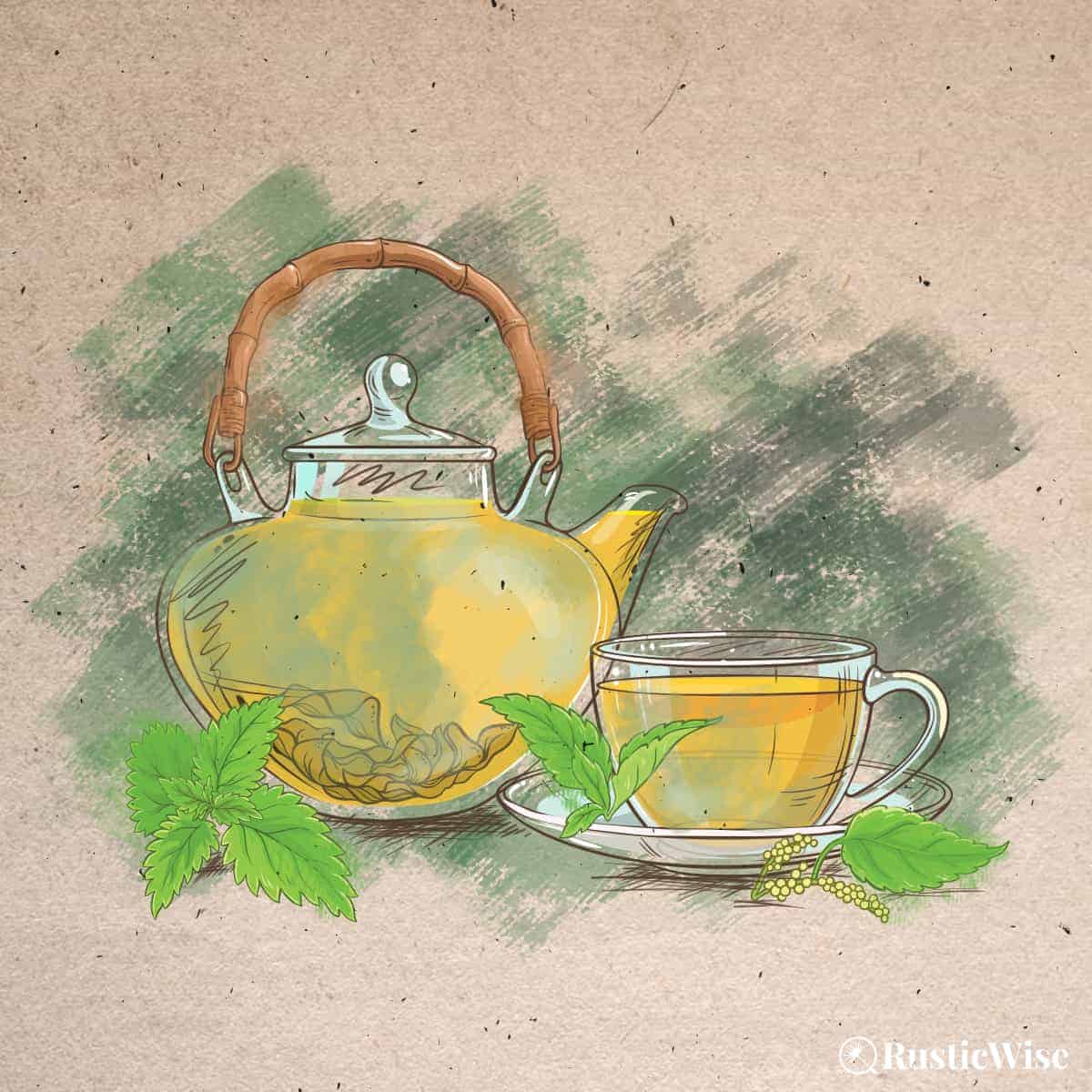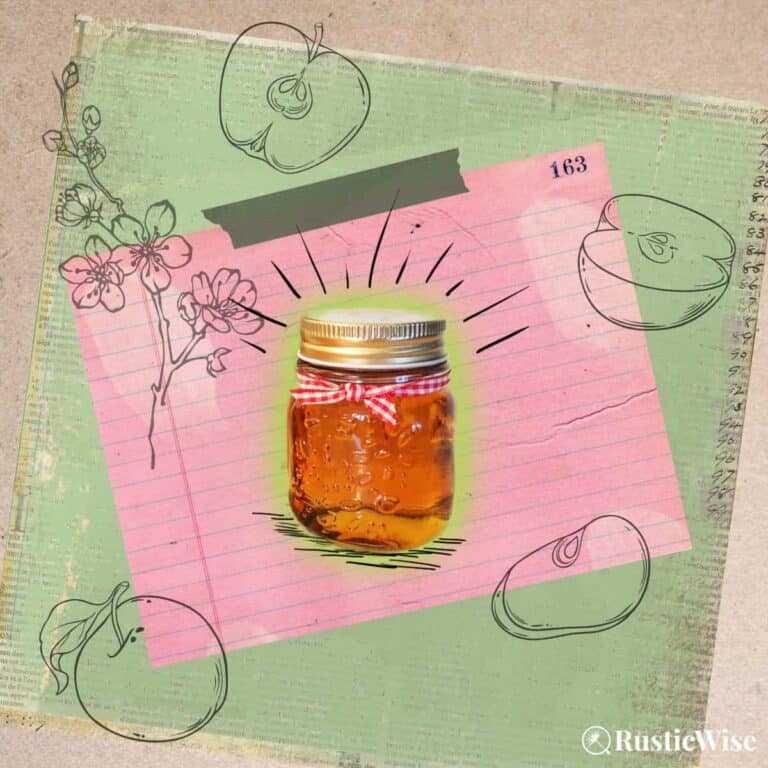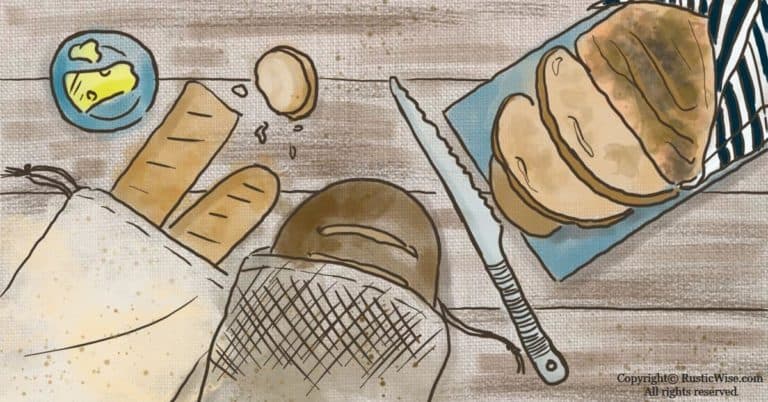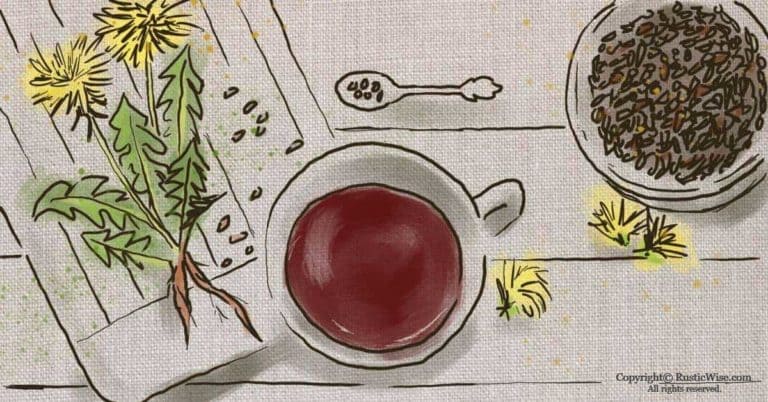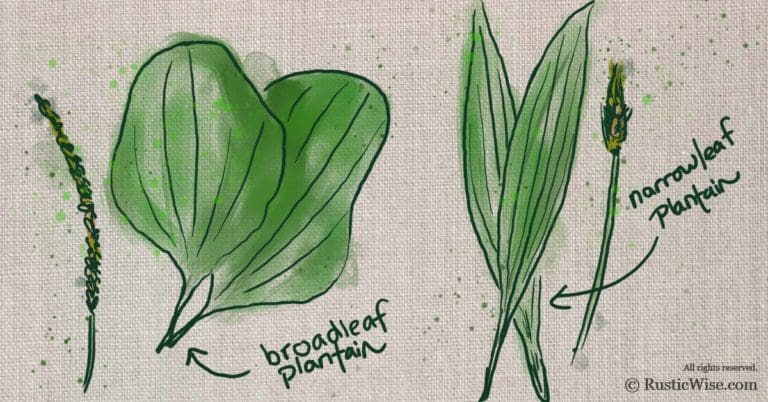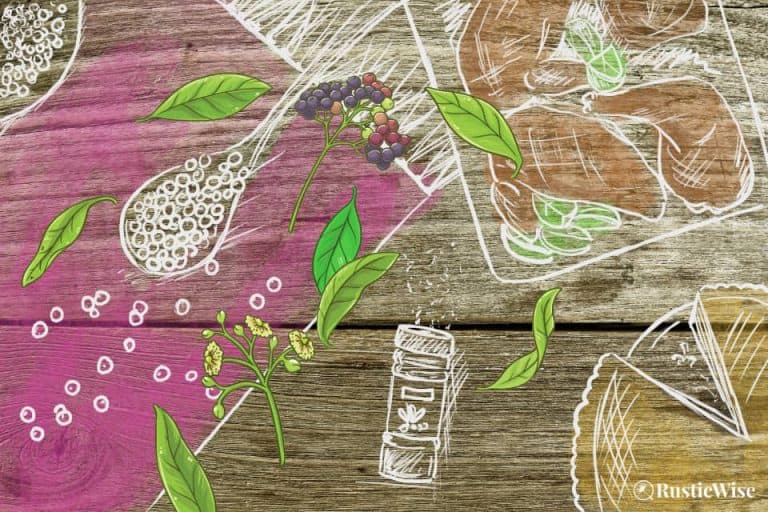How To Make Nettle Tea With Fresh or Dried Leaves
If you’ve ever brushed against a stinging nettle plant outdoors, you might not think that this same plant makes a great nutritious herbal tea. But it does! Nettle leaves, once properly prepared, are perfectly safe to consume (and won’t cause any stinging).
The nettle plant spreads readily and is found all over the world today. I’ll show you how to make nettle tea with fresh or dried leaves. Let’s learn how to harvest the leaves without getting hurt. I’ll also cover how to dehydrate the leaves for later use. A cup of nettle tea may be just the thing if you’re looking for an overall health tonic, promoting healthy joints, or keeping hay fever in check.
Add this stinging plant to your list of useful wild edible food. Let’s get started!
A closer look at the stinging nettle plant
The stinging nettle plant is a perennial herbaceous plant that is commonly found in temperate regions around the world. There are several species of nettle plant, withUrtica dioica (aka greater nettle or common nettle) being the most common, followed by U. urens (aka lesser nettle or dwarf nettle). Its botanical name comes from the Latin term urere which means “to burn.”¹
If you look carefully, you’ll notice tiny hairs covering the leaves and stems of the plant. Each of these fine hairs contains skin-irritating chemicals which cause an unpleasant burning or itching sensation. But, if these same hairs brush against a part of your body that’s experiencing pain, these hairs can actually decrease pain. Scientists believe these chemicals may disrupt the way the body relays pain signals.²
Traditionally, these leaves were applied to wounds to heal and stop bleeding. The leaves also have astringent properties.
Despite the nasty sting it produces when brushed against the skin, stinging nettle has been used for centuries for its medicinal and nutritional properties. The plant is rich in vitamins, minerals, and antioxidants, making it a popular ingredient in herbal medicine, teas, and supplements.
It is also known for its ability to relieve symptoms of allergies, arthritis, and urinary tract infections. Additionally, the stinging nettle plant has been used in traditional medicine to treat various ailments such as joint pain, inflammation, and skin conditions.
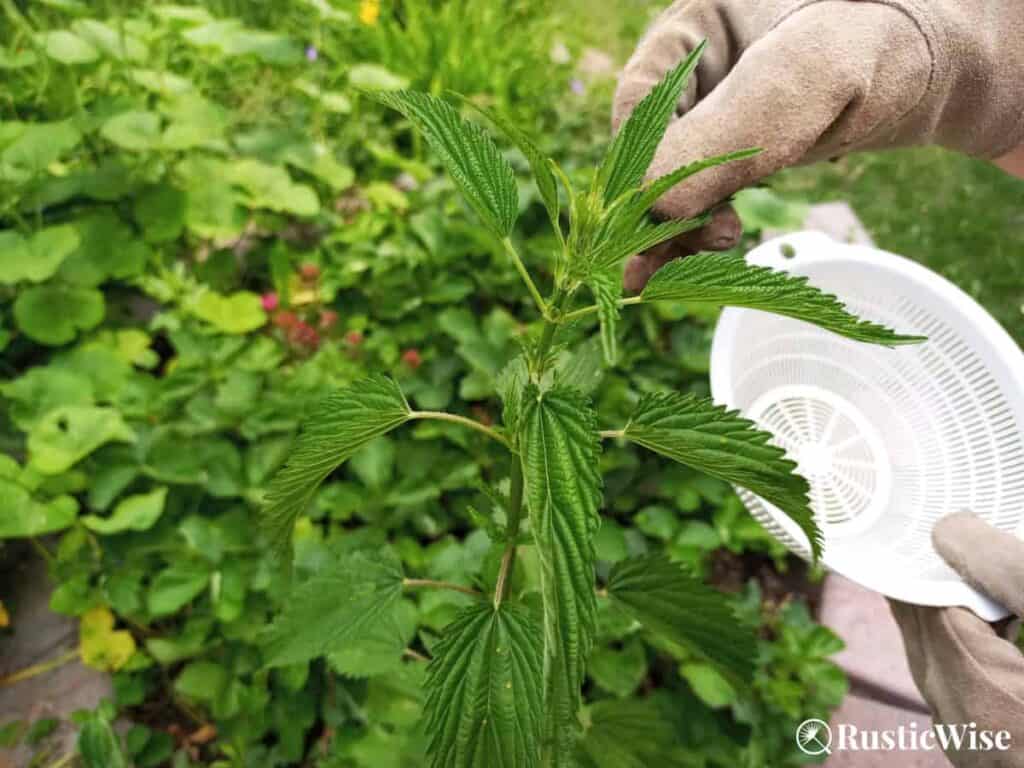
Credit: RusticWise
Nettle leaf vs. nettle root
The aerial parts of the plant (leaves and stems) and the roots are used for medicinal purposes. The leaves and roots contain different properties and serve different purposes. This article focuses on using nettle leaf to brew your own herbal tea.
You can find both nettle leaf tea and root powders at health food stores, or online.
- Nettle leaf: Today it’s mostly used to fight inflammation, which is why you’ll see many teas marketed as promoting healthy joints. It’s also purportedly a natural way to keep seasonal allergies in check.
- Nettle roots: The dried roots of this herb are mainly used to treat benign prostatic hyperplasia (BPH). In Europe, nettle root is often used together with other herbs, mainly saw palmetto, to relieve urinary tract issues during early stages of BPH.²
Is nettle leaf edible?
Yes, the leaves of the nettle plant are edible and safe to eat once blanched, boiled, or dried. Add this readily available and nutritious herb to your list of wild edible foods.
You can use these earthy and slightly bitter tasting greens as you would use cooked spinach. Think quiches, nettle soup, and pesto.
Where does wild nettle grow?
Nettles are a type of plant that typically grow in temperate regions around the world. They’re often found in moist, wooded areas such as forests, meadows, and along riverbanks. Nettles prefer fertile soil and thrive in areas with high levels of nitrogen.
You’ll find the stinging nettle plant in both rural and urban environments. I have some growing in my yard.
Nettles have a unique ability to adapt and spread quickly (they spread through rhizomes), which is why they are often considered invasive plants in certain areas.
Why you should make stinging nettle tea
While stinging nettle isn’t exactly a plant you’d want to cozy up to, the leaves and stems make a cup of soothing tea. It’s a widely available herb that you may come across while camping, hiking, or even poking around in your yard.
And what better way to take advantage of nature’s offerings by harvesting a few fresh leaves from an overlooked plant to nourish your body?
Besides, stinging nettle tea is rich in antioxidants, vitamins, and minerals, making it a great choice for those looking to boost their immune system and improve overall well-being.
Let’s take a closers look at the main benefits of this healing herb in the next section.
Purported health benefits of nettle tea
Note that various parts of the Urtica dioica plant are used for different purposes. While the roots are also used, the benefits listed below pertain mainly to the leaves and stems.
- Packed with nutrients: Did you know this herb can be enjoyed as a vegetable? So perhaps it’s not surprising that it’s a healthy green that offers a variety of nutrients. Nettle leaves are an excellent source of fiber for digestion, calcium and manganese for bone health.³ The leaves also contain high levels of antioxidant compounds such as polyphenols and carotenoids.⁴
- Helps with inflammation and joint health: Known for its anti-inflammatory properties, nettle tea can help alleviate symptoms of arthritis, rheumatism, and other inflammatory conditions.⁴ Nettle tea’s soothing properties can help promote overall joint health.
- Acts as a diuretic: The ability to expel liquid from the body makes this a useful herb in treating urinary tract infections.
- May provide seasonal allergy relief: Hay fever symptoms such as runny nose, watery eyes, and itchiness may be alleviated with a cup of tea using the leaves of this healing plant. Compounds in the leaves may help to lower the levels of histamine produced by the body when in contact with allergens.²
Note: If you’re looking to treat benign prostatic hyperplasia (BPH), nettle roots (not leaves) are generally used. Please speak with your doctor. Herbal tea should not be used in place of medicine.
Side effects and risks of nettle tea
Safety note: Leaves in their raw state are unsafe to consume and may cause skin irritation. Once leaves are properly processed (either by blanching/boiling, or drying) they are safe to use.
As with other herbs, it’s important not to overdo it. Consume nettle in moderation as large amounts may cause an upset stomach.
While moderate amounts of this herbal tea is generally safe for most people, it’s not for everyone. Stinging nettle tea may cause uterine contractions, so it’s not recommended for pregnant women.
Please speak with your doctor if you are taking blood thinners or diabetes medications, as nettle may interfere with them.
What do you need to make nettle tea?
You can make nettle tea with just a few ingredients and supplies:
- Nettle leaves: Nothing beats fresh nettle leaves as they provide a potent flavor and more beneficial properties. However, if fresh nettle is not readily available, dried nettle leaves can also be used.
- A breathable container or bag to collect nettle leaves in such as a colander, basket, or fabric bag
- Hot water
- Teapot and/or mug
- Other optional ingredients: To enhance the flavor, you can add a dollop of honey or slice of lemon.
- Strainer or tea infuser
- Water kettle or saucepan (if preparing on the stovetop)
How to make nettle tea 2 ways
Want to learn how to make this nourishing herbal tea? There are 2 main ways to make a cup of stinging nettle tisane (tea): with fresh leaves, or dried leaves.
When making tea with fresh herbs you’ll need more fresh leaves than dried nettle. There’s no hard and fast rule as to exactly how much leaves to use. You might want to experiment with more or less, depending on how strong you like your tea.
Tip: A general guideline is to use roughly half the amount of dried herbs as fresh. With nettle tea, a good place to start is about 1 teaspoon of dried nettle per 1 cup of water. If you’re using harvesting fresh foliage, gather about 10 to 12 leaves or roughly ¼ cup of foliage per small teapot.
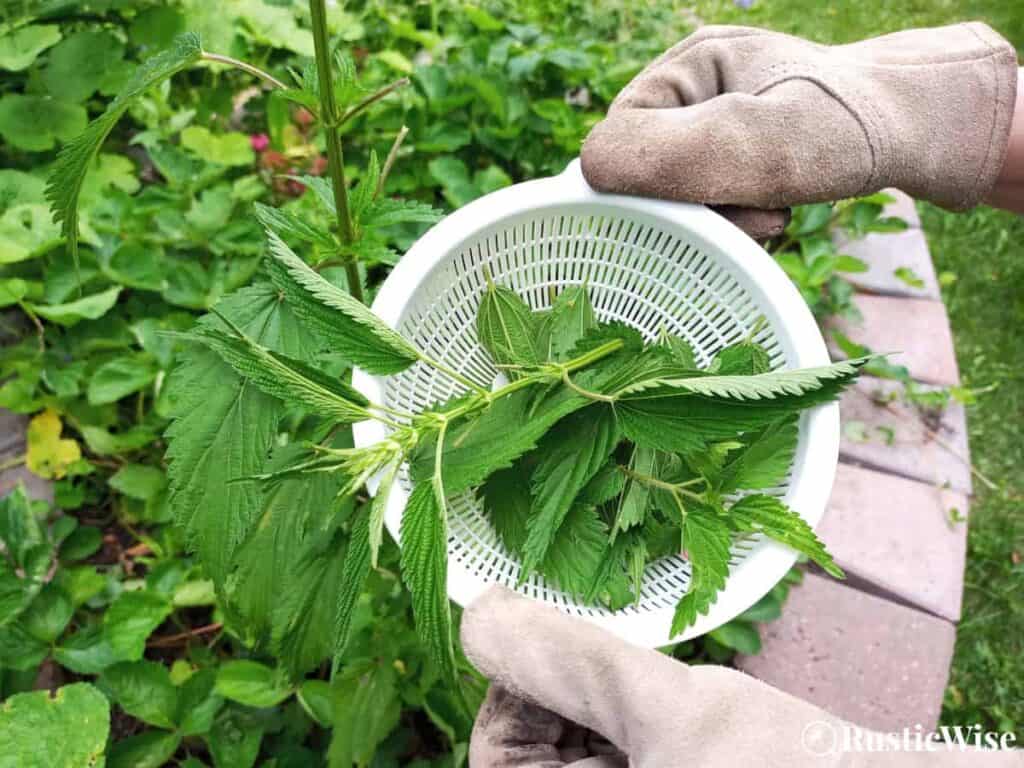
How to make nettle tea with fresh nettle leaf
The first step in making nettle tea is to have access to fresh nettle. (For more information on harvesting fresh leaves, check out the sections below!)
- Harvest leaves: Gather roughly 10 to 12 leaves (carefully) from a nettle plant.
- Wash leaves: I like to give the foliage a quick rinse under cool water. Place the leaves in a teapot, or directly into a cup.
- Boil water: Bring water to just a boil.
- Steep: Pour the hot water over the leaves and let it steep for 5 to 10 minutes.
- Strain: Remove the spent leaves and discard, or compost.
- Optional ingredients: Add a bit of honey or a slice of lemon if you desire.
Enjoy!
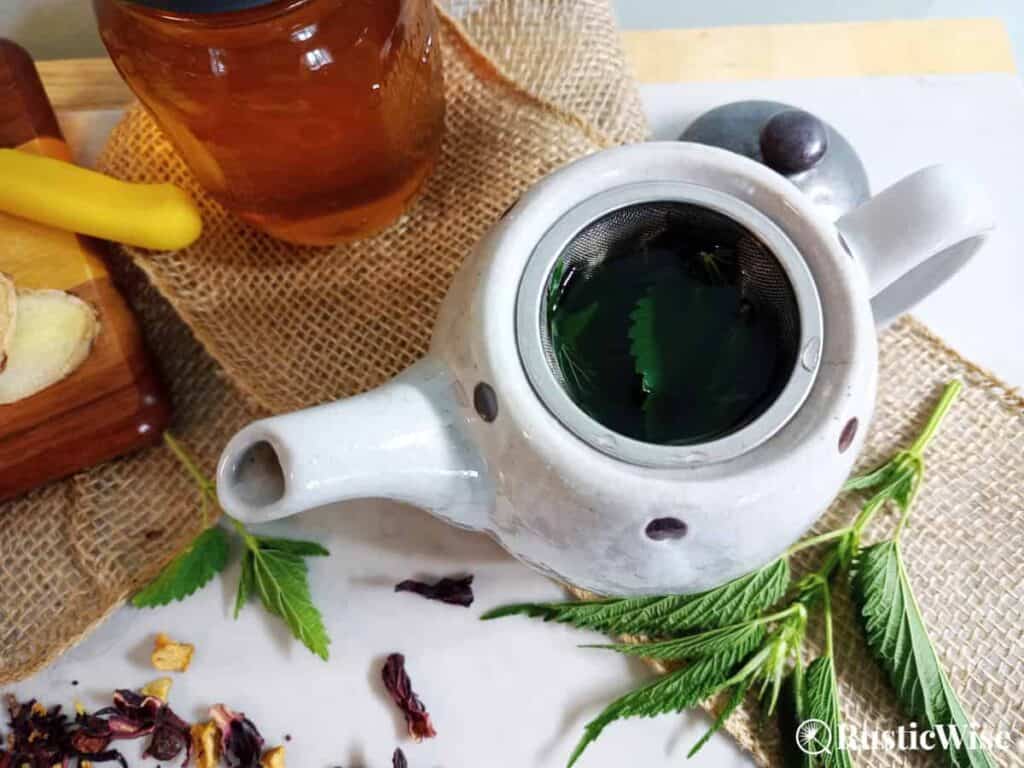
Credit: RusticWise
How to make nettle tea with dried nettle leaf
Using dried leaves is more convenient and still makes for a tasty cup! The process is much the same as making tea with fresh herbs—minus the harvesting part!
You can dry your own leaves or find loose leaf teas, or nettle tea bags from health stores, or online.
- Boil water: Bring water to just a boil.
- Measure tea leaves: Use roughly 1 teaspoon of dried nettle for 1 cup of water. Place in a tea infuser.
- Steep: Pour the hot water over the leaves and let it steep for 5 to 10 minutes.
- Strain: Remove the spent leaves and discard, or compost.
- Optional ingredients: Add a dollop of honey or a slice of lemon or lemon juice if you desire.

Credit: RusticWise
A few tips on harvesting nettle leaves
If you’re comfortable foraging for your own fresh leaves, you’ll likely find a patch of nettles nearby if you live in a temperate area. Characterized by its jagged or “toothed” leaves that come to a narrow tip, most plants grow between 2 and 5 feet tall.
Safety tip: Please make sure you properly identify the plant before harvesting. Only harvest if you’re 100 percent certain you have stinging nettle. Ensure the area you’re foraging from is free of pesticides and other chemicals.
You’ll need:
- Gloves and long sleeves to protect your hands and arms
- Scissors
- A breathable container to gather the leaves such as a colander, basket, or paper bag
It’s best to select leaves from younger plants (those smaller than 3 feet in height). This is because the leaves are more tender and less bitter. Avoid harvesting from flowering plants whose leaves may have an offputting flavor.³
Snip leaves above a node at an angle.
Remember to only take what you need. Did you know that this wild plant plays an important role in nature? Some insects such as tortoiseshell butterflies lay their eggs on the undersides of the leaves. The plant doubles as a food source once the eggs hatch.³
Ideal time to forage for stinging nettles
The best time to forage and harvest nettle is during the spring and summer months, when their growth is most prominent. Go foraging in the morning sometime in spring or early summer before the plants flower.
How to dry nettle leaf
Once you’ve gathered a batch of leaves, it’s easy to dry them for future use.
- Rinse under cool water and drain.
- Bake on low heat, between 95 and 115 degrees Fahrenheit (35–46 degrees Celsius) until completely dried.
- You may like to crumble them or leave intact. Don’t forget to label!
Other delicious herbal blends that pair with nettle
To create a more flavorful tea, you can try creating your own herbal blend. Here are a few other herbs that pair great with this stinging plant:
- Citrus flavored herbs such as lemon verbena or lemon balm
- Mint
- Yarrow
The best way to store nettle tea
Store dried herbs in an airtight container in a cool, dark place such as a pantry cupboard for 6 to 12 months. You can also freeze dried leaves in a freezer-safe container for up to 1 year.
Related questions
What’s the difference between nettle tea and a stinging nettle infusion?
Both tea and infusions involve steeping leaves or herbs in boiling water for a period of time. While tea usually involves using a small amount of herbs and steeping for a short period of time (generally up to 10 minutes), herbal infusions use larger amounts of herbs and are steeped for longer (up to several hours).
Infusions are more potent than herbal tisanes (teas).
What does nettle tea taste like?
The leaves have earthy undertones with grassiness. It’s overall a pleasant taste, but honey and lemon help make it even more palatable.
Is nettle tea caffeine-free?
Yes! Drinking nettle tea before bedtime is perfectly fine as it doesn’t contain any caffeine. Keep in mind that if you’re drinking store-bought nettle blends that are mixed with green, white, or black tea leaves, these will have caffeine.
👉 If you like this post, see our Timeless Guide To Foraging for Wild Food. 🌿
Would you like more timeless tips via email?
Fun tips to help you live an independent, self-sustaining lifestyle. Opt-out at any time.


References
- HerbalGram, Stinging Nettle, https://www.herbalgram.org/resources/herbalgram/issues/110/table-of-contents/hg110-herbpro-stingingnettle/. Accessed July 2023.
- Mount Sinai, Stinging nettle, https://www.mountsinai.org/health-library/herb/stinging-nettle. Accessed July 2023.
- Oregon State University, Wild Edibles: Stinging Nettle, https://extension.oregonstate.edu/catalog/pub/em-9373-wild-edibles-stinging-nettle. Accessed July 2023.
- Bhusal, K. K., Magar, S. K., Thapa, R., Lamsal, A., Bhandari, S., Maharjan, R., Shrestha, S., & Shrestha, J. (2022). Nutritional and pharmacological importance of stinging nettle (Urtica dioica L.): A review. Heliyon, 8(6), e09717. https://doi.org/10.1016/j.heliyon.2022.e09717

Author: Theresa Tesolin
Theresa is co-founder of RusticWise. She helps people unleash their inner DIY spirit by encouraging them to get dirty and make or grow something from scratch.

